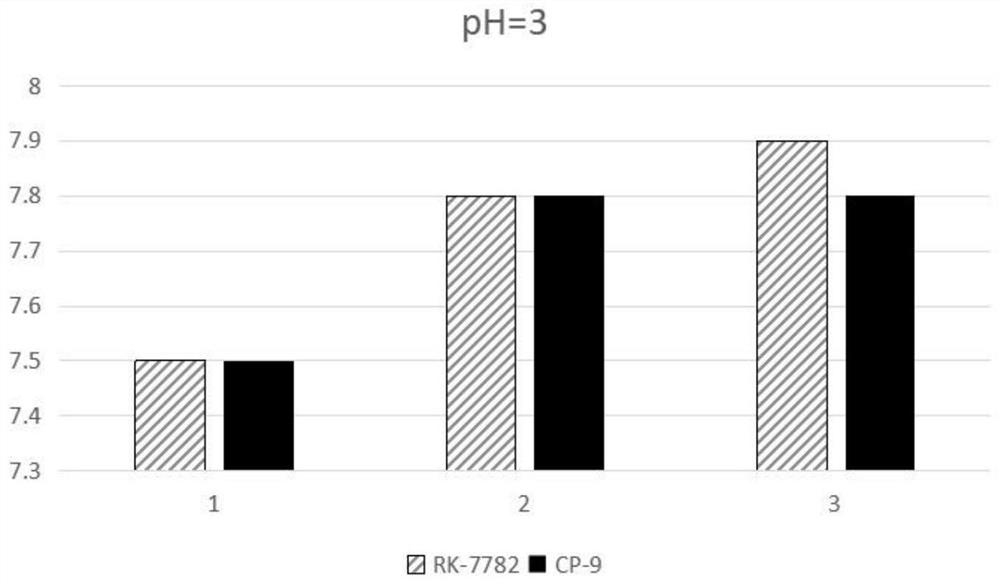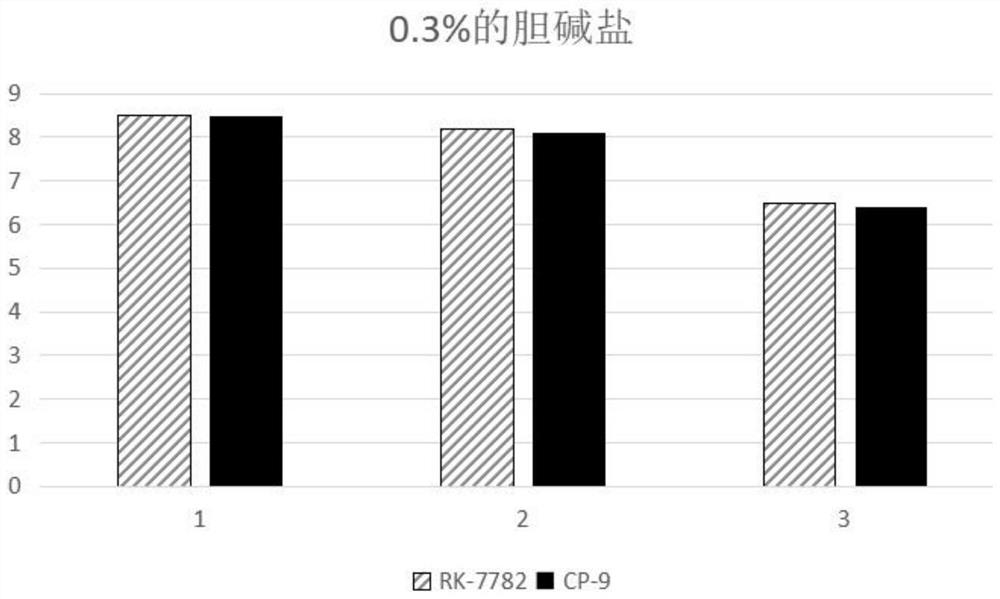Bifidobacterium lactis strain RK-7782 with intestinal regulation function and application of bifidobacterium lactis strain RK-7782
A technology of RK-7782 and Bifidobacterium lactis, applied in the field of biological strains, can solve the problems of poor effect or poor resistance, etc., and achieve the effect of significant inhibitory ability and excellent ability to resist human gastric juice and intestinal juice
- Summary
- Abstract
- Description
- Claims
- Application Information
AI Technical Summary
Problems solved by technology
Method used
Image
Examples
Embodiment 1
[0035] 1. Sample collection: Beginning in December 2019 in the Municipal Infant and Child Health Care Hospital, an anonymous survey was conducted on the health status of infants and young children in the area and feces samples were collected from infants aged 3-8 months.
[0036] Fecal samples were soaked in anaerobic diluent, numbered, and stored in liquid nitrogen. After collecting a predetermined number of samples, transfer all samples to a dry ice incubator, store them at -80°C, and isolate and culture the strains within 7 days.
[0037] 2. Separation and screening method
[0038] (1) Fully stir and disperse the feces samples of healthy infants immersed in the anaerobic diluent to obtain a feces suspension, which is serially diluted 10 times with the anaerobic diluent, and poured into a plate using the NPNL-X-Gal selective medium. Cultivate in the anaerobic bag with an anaerobic gas generating bag at 37°C for 40-60 hours to isolate potential bifidobacteria;
[0039] (2) ...
Embodiment 2
[0048] The animal experiments and bacterial displacement experiments are described in detail below.
[0049] 1. Experimental material: Bifidobacterium lactis RK-7782
[0050] 2. Experimental method
[0051] (1) Animal experiment design:
[0052] SPF grade Balb / C mice, 6 to 8 weeks old, female. Raised in SPF animal room: temperature 25±2°C, humidity 45%±1%, 12h light / dark cycle, free access to water and food. The mice were randomly divided into 10 groups (10 mice in each group), grouped as follows:
[0053] In the gavage group (3 groups), each mouse was treated with 2×10 8 , 2×10 9 and 2×10 10 cfu / rat orally for 30 days (0.2 mL per mouse per day);
[0054] The control group was intragastrically administered with normal saline;
[0055] During the experiment, the general appearance, behavior, poisoning performance and death of the mice were observed every day, and the body weight and food intake of the mice were recorded every week.
[0056] (2) Statistical analysis The...
Embodiment 3
[0063] Evaluation of strain tolerance:
[0064] Tolerance was evaluated by comparing the B. lactis RK-7782 strain with the commercial B. lactis CP-9. The acid resistance test, bile salt resistance test and simulated artificial gastrointestinal fluid test were carried out on CP-9, and the tolerance was evaluated by plate counting.
[0065] According to the experimental results, the following conclusions can be drawn: Figure 1-2 shown.
[0066] Within 0-4h, the survival number of Bifidobacterium lactis RK-7782 increased by about 0.5 orders of magnitude under the condition of pH3, and the number of survivals of Bifidobacterium lactis RK-7782 decreased by about two orders of magnitude in 0.3% bile salt. In addition, in the low concentration (mass concentration) of 0.1% bile salt within 4 hours, the survival number of Bifidobacterium lactis RK-7782 only decreased by about 0.5 orders of magnitude.
[0067] From the above experiments, it can be proved that it is equivalent to or ...
PUM
 Login to View More
Login to View More Abstract
Description
Claims
Application Information
 Login to View More
Login to View More - R&D
- Intellectual Property
- Life Sciences
- Materials
- Tech Scout
- Unparalleled Data Quality
- Higher Quality Content
- 60% Fewer Hallucinations
Browse by: Latest US Patents, China's latest patents, Technical Efficacy Thesaurus, Application Domain, Technology Topic, Popular Technical Reports.
© 2025 PatSnap. All rights reserved.Legal|Privacy policy|Modern Slavery Act Transparency Statement|Sitemap|About US| Contact US: help@patsnap.com



